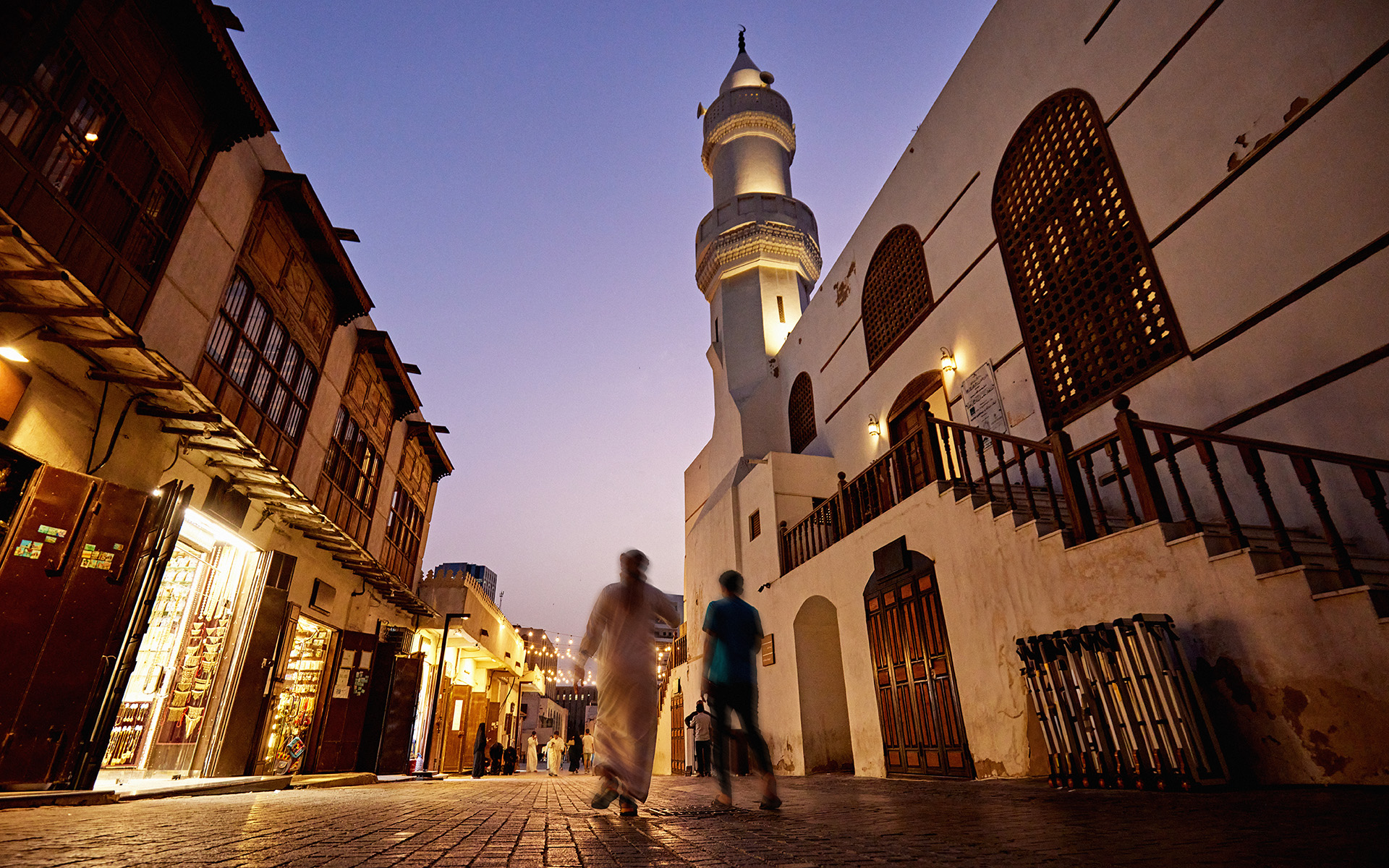A historic mobility hub, Jeddah also benefits from the Saudi government’s ambitious economic reform priorities, including for transportation.
City Class Score
| Commercial Hubs | |
| Export Champions | |
| Mobility Connectors | |
| Climate Resilient |
Corporate HQs, MNC presence, branded outlets, hotels, manufacturing, start-up ecosystem,
transport linkages, population, and income.
Go to the class information
Manufacturing, industrial parks, export share and share change by category, air and port
infrastructure, freight time to market, trade agreements, and expert interviews.
Go to the class information
Passenger traffic, flight connectivity, air-cargo flights, port infrastructure, container
ship sailings, and major road networks.
Go to the class information
Coastal and river flooding, extreme rain, extreme heat and humidity, cyclones, and water
scarcity.
Go to the class information
Jeddah boasts a rich history as a bustling transport hub. Known as the “Gateway
to Makkah” since the seventh century, the city has long welcomed Muslim pilgrims from every corner
of the globe. In a 12th-century travelogue written during his own pilgrimage, the Arab geographer
Ibn Jubayr painted a vivid picture of the city’s port, describing it as “filled with ships from all
parts of the world, bringing pilgrims and goods.” The building of the Suez Canal in the 19th
century, which shortened sea routes between Asia and Europe, intensified maritime activity and
enriched the city’s merchant elite, who adorned their multistory homes with lavish decorations.
Today, Jeddah stands as one of the largest ports in the Middle East, and is currently in
the midst of a multibillion-dollar expansion as part of Saudi Arabia’s Vision 2030 program, which
aims to position the port as a central hub in the nation’s maritime aspirations. India is pursuing
“Made in India” and Indonesia is relocating its national capital from Jakarta
to Nusantara, but Saudi Arabia’s plans to transform its economy are the most high profile of any
government’s initiatives, capturing global attention with a range of so-called giga-projects. As a
result, Jeddah’s significance as a transport hub is set to grow even further.
The city’s
container ports represent just a fraction of what makes Jeddah a standout in mobility. Its airport
boasts more international connections than its counterparts in Hong Kong or Singapore, largely due
to the influx of pilgrim flights. The corridor between Jeddah and Cairo
ranks among the busiest in the world, and the airport’s dedicated Hajj Terminal can accommodate up
to 70,000 passengers at any given moment. The Haramain high-speed railway, meanwhile, swiftly
transports travelers from Jeddah to the holy cities of Makkah to the east and Medina to the north.
Jeddah’s role as a mobility hub also fuels its industrial growth. The expanding Third
Industrial City, which lies to the south of the city, recently welcomed Nestlé, marking the Swiss
food and beverage giant’s first investment in Saudi Arabia. With its proximity to Red Sea shipping
and burgeoning air cargo operations, the city’s industrial parks are poised for further growth. The
government has a clear ambition to attract more foreign industrial investment into these parks,
fostering the manufacture of goods for both local consumption and export. If so, Jeddah’s strengths
as a mobility connector will only grow.

